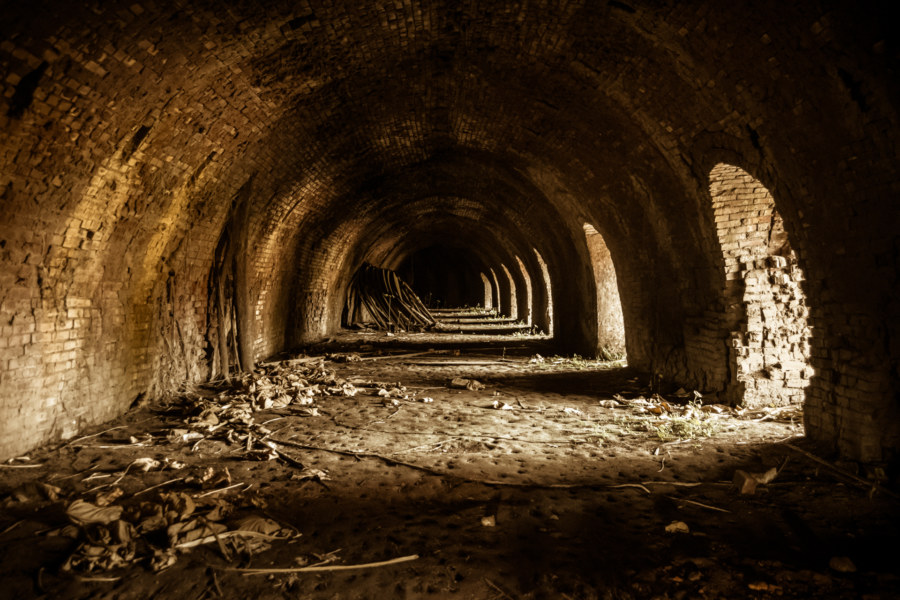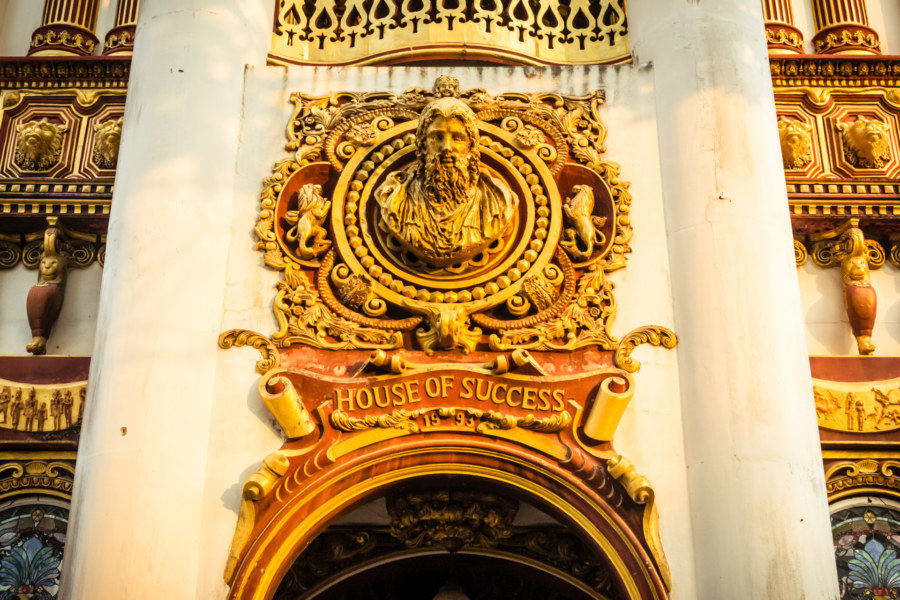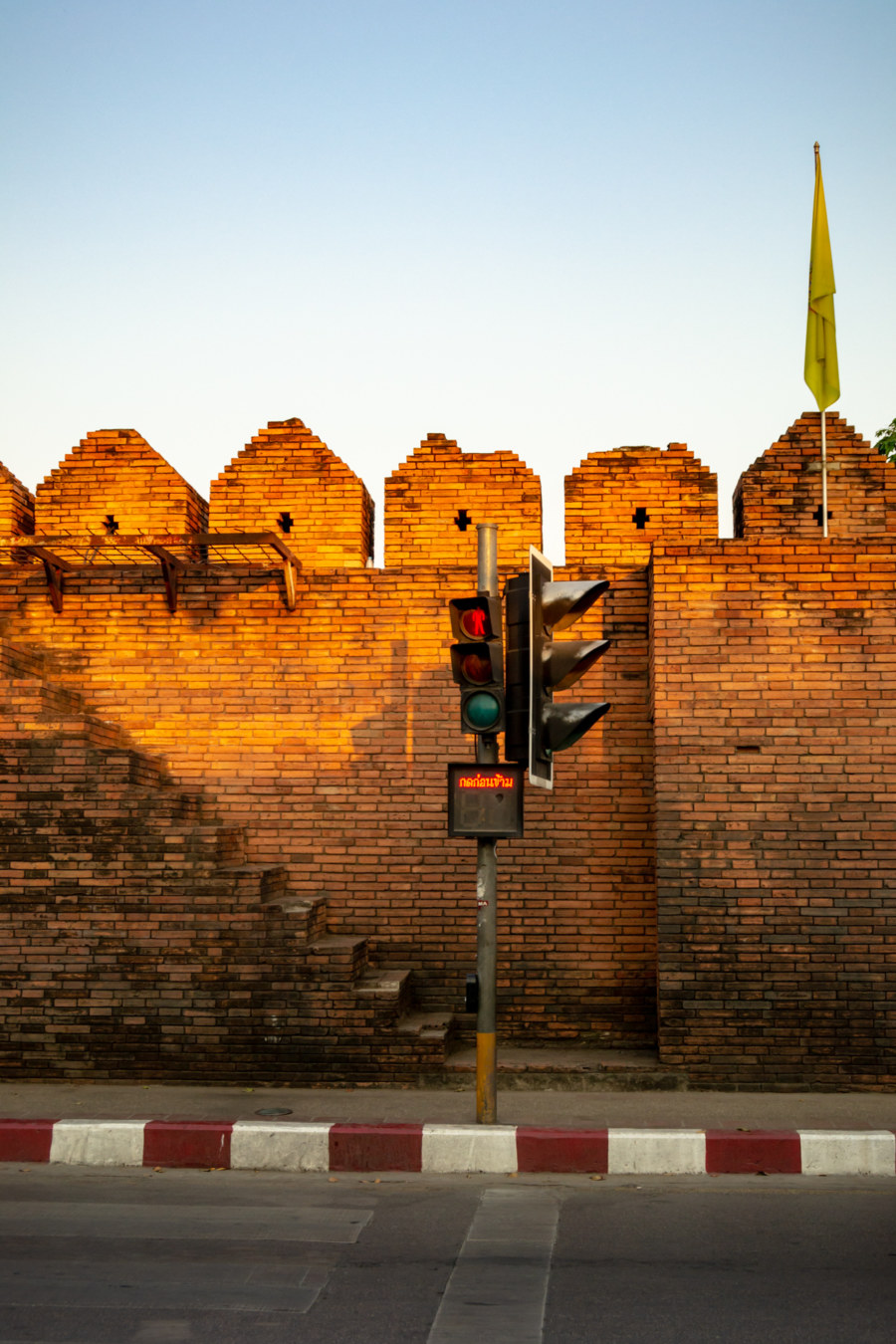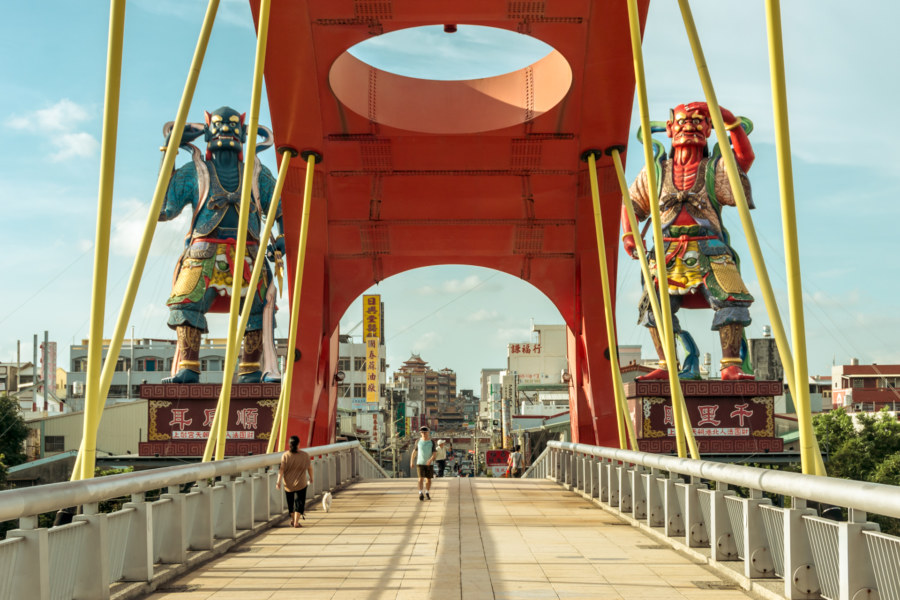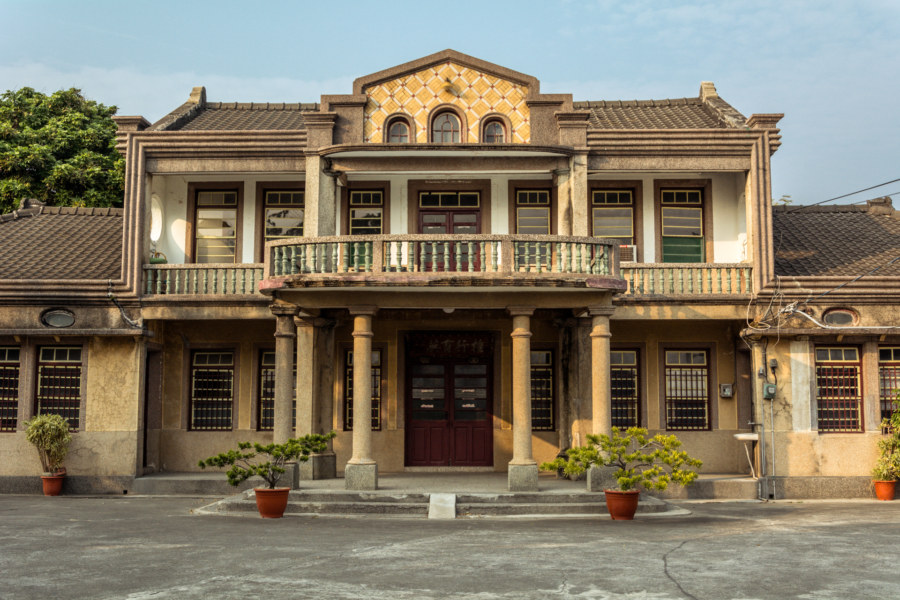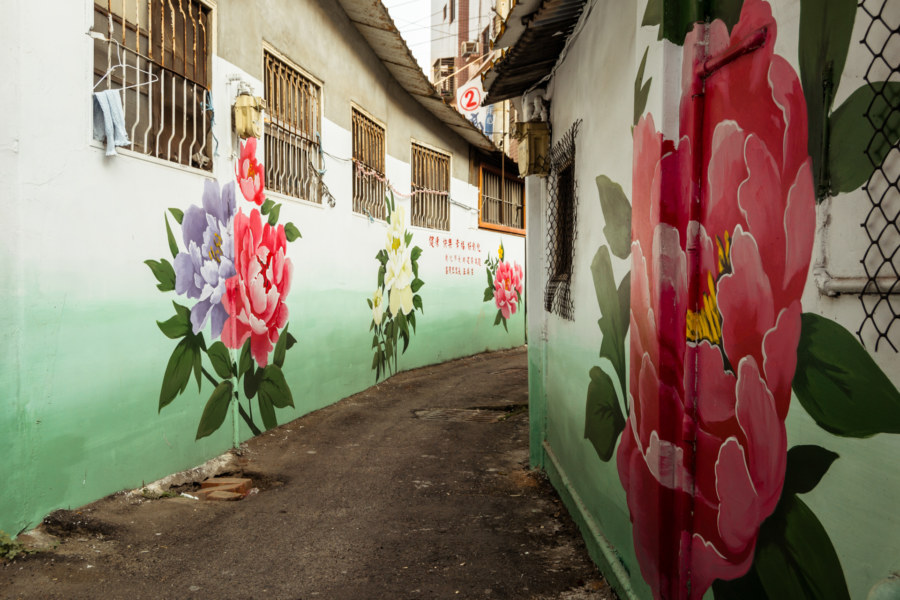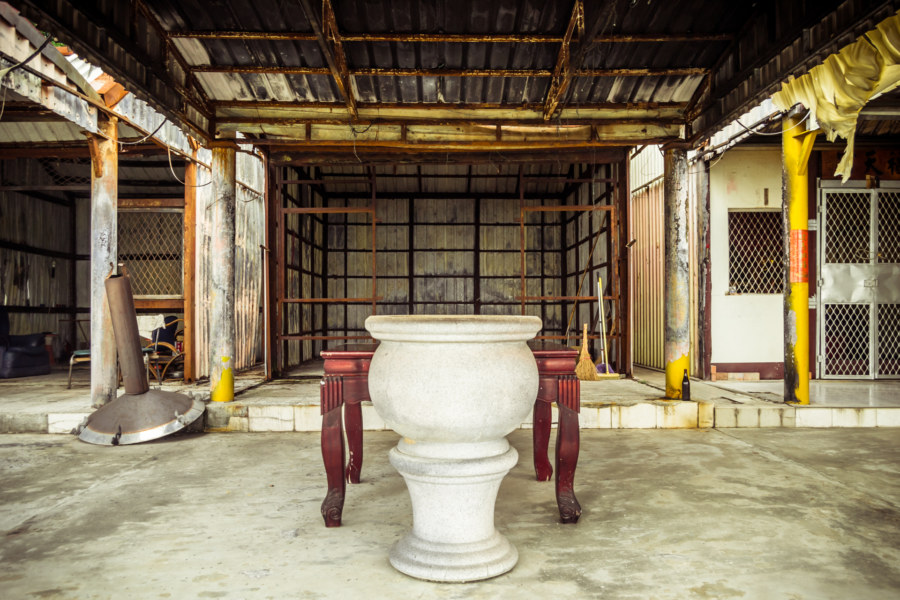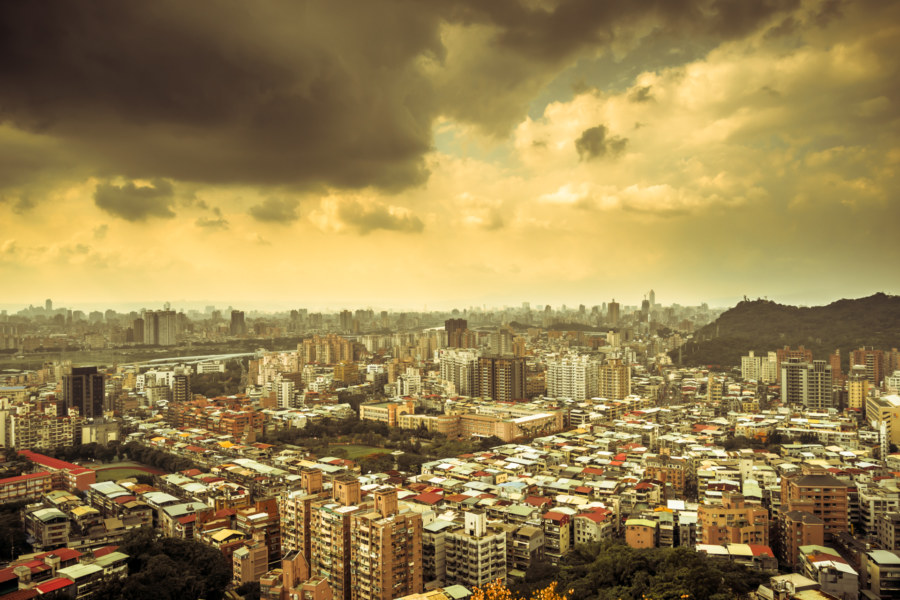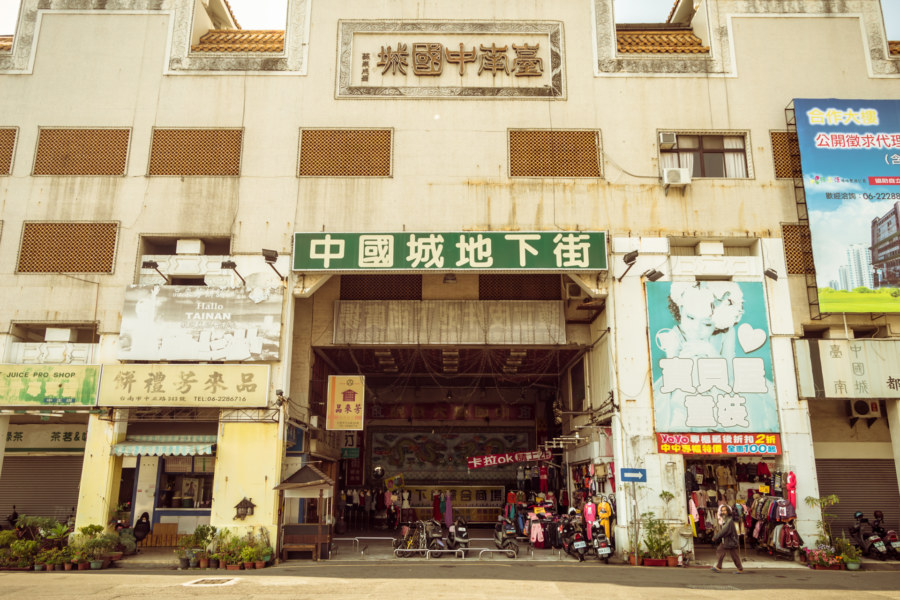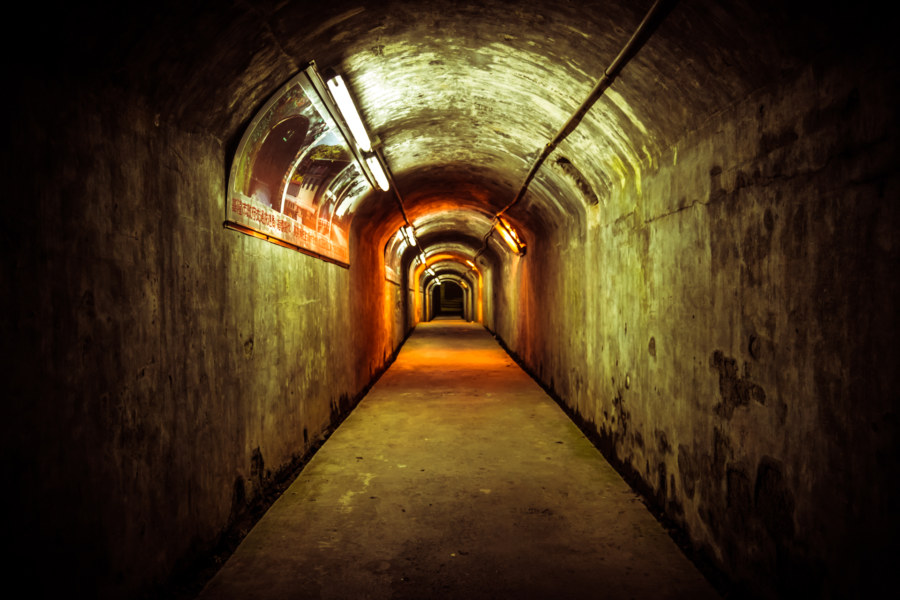Jīnshùnchéng Hoffmann Kiln 金順成八卦窯 is located on the eastern Changhua Plain 彰化平原 in Huatan, a rural township south of Changhua City. During the Japanese colonial era this part of Taiwan specialized in brick and ceramic production due to plentiful supplies of high-quality clay, and the industry continued to expand after the arrival of the KMT. This particular kiln only dates back to the early 1960s and is the last of its kind in Changhua. For that reason the county government designated it a historic building in 2010 but very little has been done to clean the site and make it inviting to visitors.
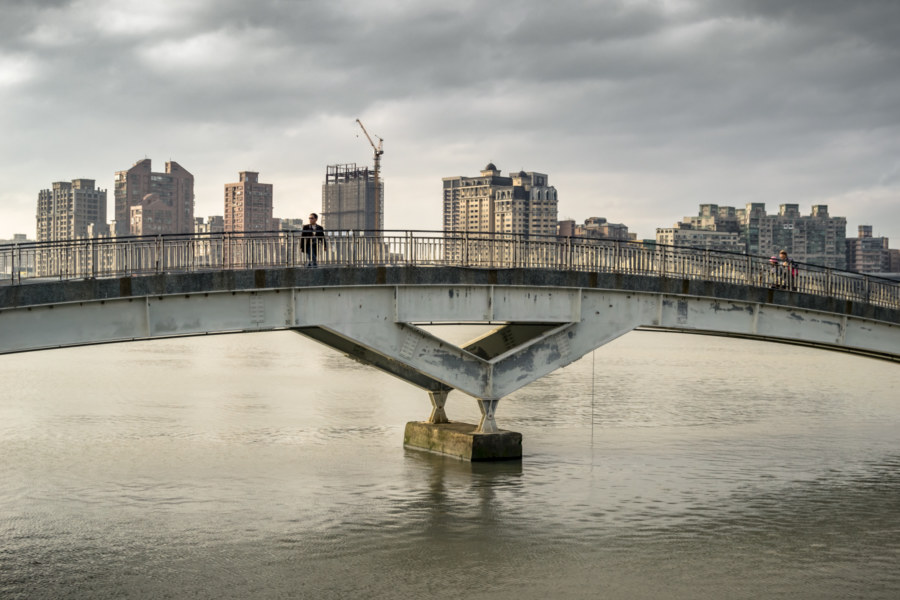
Exploring the urban condition: the buildings that tower over all, the rhythm of the streets, and the fleeting moments of humanity in the midst of the concrete jungle. See also: urbex.
Subterms
Adjacent Terms
House of Success, Chiang Mai
Mere minutes after setting out from my hotel to explore Chiang Mai I stumbled upon a bizarre building in a mostly empty lot just inside the old city walls. I swear I don’t always go looking for abandoned places—sometimes they find me instead. And in this case I couldn’t very well say no, now could I? I walked up the stairs to take a closer look at this ostentatious ruin, the House of Success.
Postcards From Chiang Mai 2012
I am just about to zip off to Chiang Mai for the second time and I realized—I still haven’t shared any photos from the first time I went! The reason for this is simple: I was sick every day I was there in early 2012. I made the mistake of visiting during burning season and could hardly breathe the entire time I was there. I didn’t even know what was going on at the time, a consequence of my inexperience with extreme air pollution and the lack of a cell phone (on which I would have certainly read about it in the news as I did after returning to Bangkok) a few days later. “National Haze Crisis Declared”, the headlines read.
Postcards From Beigang 北港明信片
Beigang is a historic town on the riverside border between Yunlin and Chiayi in southern Taiwan. I made a brief, unplanned stopover in Beigang while riding north to Changhua in the summer of 2014. I was only vaguely aware of Beigang’s existence, having at some point read something about Cháotiān Temple 朝天宫, one of Taiwan’s most famous Mazu 媽祖 temples, but I had a hunch that there might be more to see—and I was right! If you enjoy visiting traditional towns with a lot of history then Beigang should definitely be on your list.
Huang Sanyuan Residence 黃三元故居
Huáng Sānyuán Residence (黃三元故居) is a beautiful Western-style house located along a country road in Puxin, a rural township in the heart of Changhua, Taiwan. It was built in 1940 by Huáng Yì 黃義, a wealthy employee (and presumably an executive) of the Japanese colonial era Taiwan Sugar Company (台糖公司). If this government source is to be believed Huang Yi had five wives who bore him five sons—and some unknown number of daughters. No wonder he needed such a large house!
Postcards From Changhua City 1 彰化市明信片一號
I moved to Changhua City in November 2014 to see what it’s like living in a traditional town in central Taiwan. I had an interesting time staying in Tainan for three months earlier that year so I figured why not give Changhua a shot for the wintertime? Changhua is nowhere near as lively and interesting as Taiwan’s old southern capital but it is not without charm. Here I have gathered up some of the more representative images I captured during my first two months of residency, mostly of the area immediately to the east of the train station, which also happens to be the oldest part of town. Explanations are given in the caption of each photo, where available.
Dayeh Futian Temple 大葉福天宮
High on the upper slopes of the modest Bagua Mountain Range 八卦山脈 (pinyin: Bāguàshānmài) overlooking Dayeh University (pinyin: Dàyè), on the border between Changhua and Nantou in Taiwan, stands a strange half-abandoned temple. It is peculiar in that temples are almost never left to the elements the way this one has been. Abandoned buildings are commonplace in this land of abundant ruins—but even the most obscure temples receive regular maintenance in the form of incense and offerings, among other things. To neglect the gods and spirits is to curse a place with tremendously bad luck and misfortune. Temples may be formally decommissioned, dismantled, and destroyed—but they are almost never simply abandoned or left to decay like this. What’s going on here?
Postcards From Wenshan District 文山區明信片
Last year, near the end of 2013, I had the good fortune to move to Wenshan, the southernmost part of Taipei. In late September I was nearing the end of my first round-the-island bicycle tour and put a call out on Facebook asking if anyone knew of a place I could stay for a month or so. That call was answered—and I ended up staying with a couple of cool European guys for six months before heading south to Tainan in April 2014.
Tainan Chinatown 臺南中國城
Tainan Chinatown 臺南中國城 is a half-abandoned and soon to be demolished shopping mall and entertainment complex in Tainan City. Built in 1983, it was designed by C.Y. Lee, a famous architect who later directed the construction of 85 Sky Tower and Taipei 101. I went by to shoot a few photos with some friends one sunny afternoon in January 2014 so I figure I may as well share them here.
100-Year-Old Bomb Shelter 百年防空洞
I found myself in the seedy port town of Keelung near the end of my round-the-island bicycle tour of Taiwan in 2013. Later on, after dinner was done, I went out wandering the labyrinth of night—and, on the far side of the railway line near Sānkēng Station 三坑車站 I noticed the entrance to a tunnel running beneath the hillside. Curious, I hunched down (the clearance is only around 175 cm) and made my way through. A minute later I emerged on the other side, somewhat disoriented, though I quickly regained my bearings.
